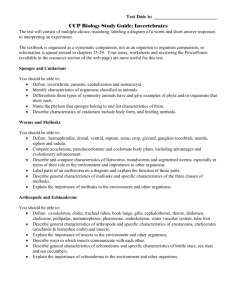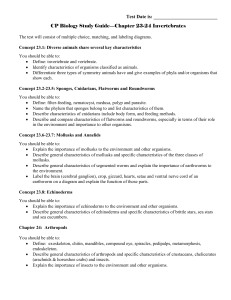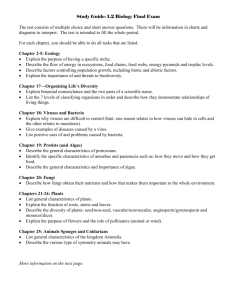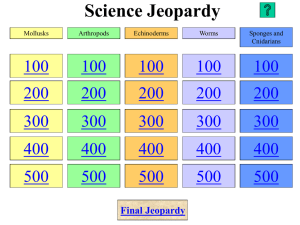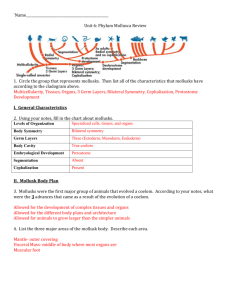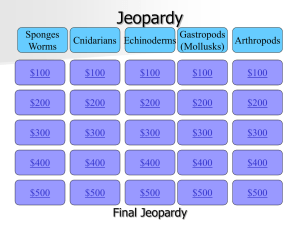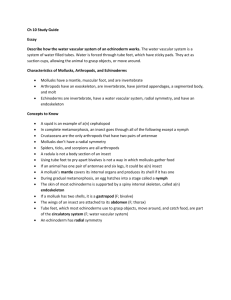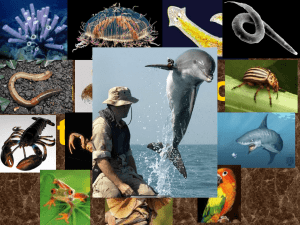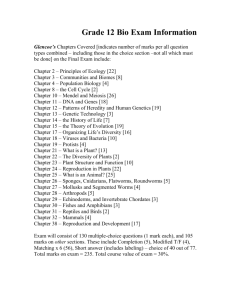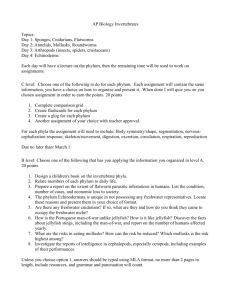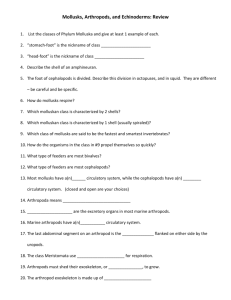Zoology Final Exam Review Birds
advertisement
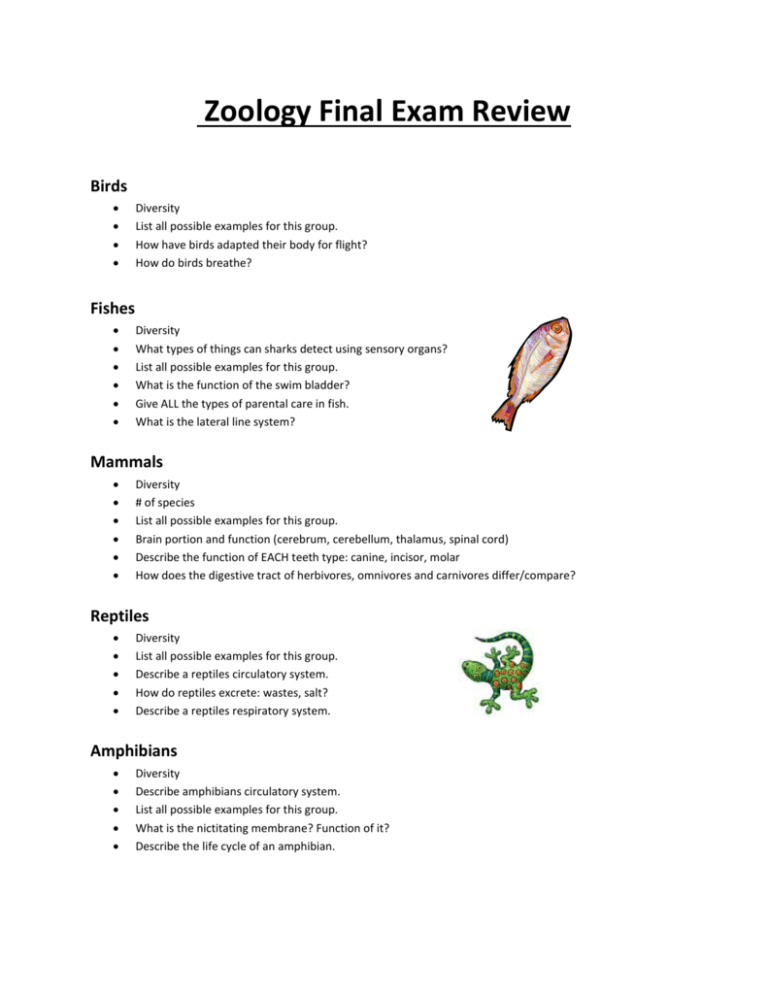
Zoology Final Exam Review Birds Diversity List all possible examples for this group. How have birds adapted their body for flight? How do birds breathe? Fishes Diversity What types of things can sharks detect using sensory organs? List all possible examples for this group. What is the function of the swim bladder? Give ALL the types of parental care in fish. What is the lateral line system? Mammals Diversity # of species List all possible examples for this group. Brain portion and function (cerebrum, cerebellum, thalamus, spinal cord) Describe the function of EACH teeth type: canine, incisor, molar How does the digestive tract of herbivores, omnivores and carnivores differ/compare? Reptiles Diversity List all possible examples for this group. Describe a reptiles circulatory system. How do reptiles excrete: wastes, salt? Describe a reptiles respiratory system. Amphibians Diversity Describe amphibians circulatory system. List all possible examples for this group. What is the nictitating membrane? Function of it? Describe the life cycle of an amphibian. Arthropods (Terrestrial and Aquatic) How do insects sense their environment? What do they use to hear? See? Describe spiders (leg #, eyes, sensory organs, segment #) List all possible examples for this group. (of EACH group) What organs do spiders/insects have for water retention? What is the cephalothorax? How many body segments do crustaceans have? How do insects breathe? What do mandibles (in BOTH aquatic and terrestrial arthropods) do? Describe chelicerae. Echinoderms List all possible examples for this group. Diversity What is radial symmetry? Give an example of an animal with it. Where do echinoderms live? Draw a starfish. Label: ring canal, tube foot, ampulla, stomach, madreporite Mollusks List all possible examples for this group. Diversity What does the mantle do in bivalve mollusks? Which mollusks have a shell? Which do not? Describe a mollusks sensory organs. What adaptation allows for movement in mollusks? (Choose from: Legs, foot, radula, OR shell) Worms (Segmented/Flat) How do earthworms breathe? List all possible examples for this group. (of EACH group) What are the basic characteristics of the Phylum Annelida? Diversity Earthworm drawing (know the basic organs What are setae? Cnidarians List all possible examples for this group. How many body forms are their in the life cycle of a Cnidarian? What is the body symmetry of cnidarians? Sponges/Porifera List all possible examples for this group. Choanocytes/collar cell function Draw/Label a collar cell Describe spongin and spicules. Why are sponges in the Phylum Porifera? What is an osculum? Where is it located? General Info Anterior/Posterior Ventral/Dorsal Describe an invertebrate. Define: Sessile, coelom, ectotherm, exoskeleton, endotherm Classification (Be able to match an EXAMPLE and ONE/TWO UNIQUE characteristic with each of the classes/orders/groups listed below!) Agnatha Anuran Arachnida Caecilian Carnivora Caudata Cerripeds Cetacea Chilopods Chondrichthyes Copepoda Crocodilian Decopod Diplopoda Hominids Insecta Insectivora Isopod Lagomorpha Merostomata Neognathae Ostieichthyes Paleognathae Perissodactyla Proboscidea Rhynchocephalia Rodent Squamata Testudines
